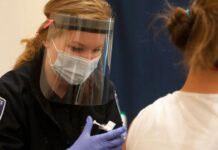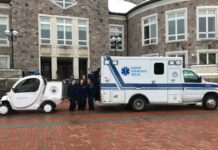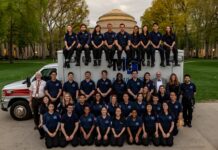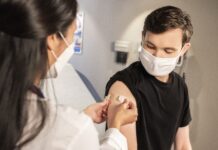“Not everything that is faced can be changed. But nothing can be changed until it is faced.” – James Baldwin
The modern model of Emergency Medical Services (EMS) in the United States was established over fifty years ago by a team of Black providers in an inner-city Pittsburgh neighborhood.1 Before the late 1960s, prehospital care was composed of little more than a transportation service in the backs of police cars and hearses, resulting in an epidemic of needless death en route to hospitals.2,3 In 1966, the National Academy of Sciences (NAS) brought attention to the problem in its white paper, Accidental Death and Disability: The Neglected Disease of Modern Society, which recommended that all communities implement EMS programs with standardized training and treatment protocols.4 However, Black Americans, who were already receiving disparate treatment in the medical field and beyond, recognized the need to build a system that could meaningfully serve their own community.1 Alongside White allies including Dr. Peter Safar, known as the “father of CPR,” Freedom House Ambulance Service was established in 1967 with the dual purposes of answering the NAS call for emergency medical care in an organized system, while also addressing disparities in healthcare access and stable employment opportunities for Black citizens, who were barred from other types of skilled work. Freedom House demonstrated the feasibility of life-saving prehospital medical care that would be used to establish national standards for EMS training and education.1 Despite a record of lifesaving work, including being regularly called to medical emergencies in White communities, Freedom House’s funding and EMS privileges in the city were transferred to a White EMS service in 1975.1
Demographics of the modern EMS workforce reflect this shift, as data from the National Registry of Emergency Medical Technicians (NREMT) demonstrate that Black Americans only represent around 5% of EMTs, with little change in the past decade.5,6 When the disquieting data on low EMS diversity first emerged from the NREMT in late 2019,5 a conversation was sparked in the EMS community concerning race, asking whether a focus on diversity in the workforce would distract from a universal focus on providing the best care for all patients. While EMS research is a relatively young field that has rightfully focused on patient care, cutting-edge training, and even community paramedicine in the past few years, research on the effects of low workforce diversity has yet to be meaningfully explored.
Research from a variety of clinical settings demonstrates that race can play a role in patient-provider communication,7,8 as well as provider decision-making, resulting in delayed or inappropriate treatment for minority patients.9,10,11 These disparities in communication and treatment spill over into patient outcomes, as demonstrated by studies such as one just last year showing that infant mortality for Black infants in the US is three times that of White infants, but that Black infants with Black doctors had significantly better outcomes.12 These studies arise from a variety of fields made up of providers who are committed to treating all patients alike, just like EMS providers. Despite this, research is continuously uncovering these underlying patterns of racial disparity.
Understanding that low provider diversity has the potential to impact our patients, the EMS research community must explore the “why” behind this phenomenon of low retention and recruitment of Black EMS providers. We can look again to other medical fields that have begun to explore the topic formally. The low rate of Black physicians has been attributed to the financial constraints and limited educational access to medical schools that disproportionately affect Black students.13,14 However, with a relatively accessible level of entry into EMS that allows high school students as young as sixteen to participate, as well as the lower cost and time commitment of EMS training courses relative to medical school, these explanations cannot be expanded far into EMS.
Studies that may be more applicable to EMS aim to describe the lived experiences of minority-race health professionals in the field. Research on minority stress theory demonstrates that minority-identifying individuals who face prejudice or discrimination experience work-related stress at higher levels than their majority-identifying counterparts, even in already highly stressful situations.15 While all EMS professionals endure a role wrought with stressful and potentially traumatic situations, research among medical professionals has upheld this theory, demonstrating that Black physicians experience unique and outright racist interactions in their profession, leading to higher levels of stress.16,17
Only the experts in this lived experience can tell us whether this is happening in EMS – and they are. Black EMTs and Paramedics are documenting their lived experiences of racism in the field both formally and informally online. Theseproviders describe patients refusing care and using racial slurs against them.18 Steven Nelson, EMS-I, earlier this year published his experiences as the only Black man in his Paramedic class and one of only a handful of Black providers in his EMS system, including hearing slurs used by both patients and colleagues.19
I had the opportunity to begin to explore the Black EMS provider experience as a formal research question in the summer of 2020, at the crossroads of the COVID-19 pandemic and national protests for racial justice, through a small and unfunded qualitative study. The project is limited in its scope and reach, and in the extent of my own analysis as someone who has not shared this experience but rather is viewing it as an outsider. Despite its limitations, preliminary results have demonstrated some of what we have seen in other medical professions: that Black EMS providers throughout the United States are facing racism in their role through interactions with others in the field. These interactions are coming from patients, strangers online, and even colleagues. This project can help us illuminate the experiences of Black providers in the arenas of EMS research and practice. What it cannot yet do is address the problem. Further research is critically and immediately needed to address not only the problem of low recruitment and retention of Black EMS providers, but also the highly stressful experiences these providers may face when they choose a career in EMS. The EMS research community has only taken the first step in describing this problem. It cannot be changed until it has been faced.
References
- Edwards ML. Pittsburgh’s Freedom House Ambulance Service: The origins of emergency medical services and the politics of race and health. J Hist Med Allied Sci. 2019;74(4):440-466. doi:10.1093/jhmas/jrz041
- Shah MN. The formation of the emergency medical services system. Am J Public Health. 2006;96(3):414-423. doi:10.2105/AJPH.2004.048793
- Caroline NL. Medical care in the streets. JAMA. 1977;237(1):43-46.
- National Academy of Sciences (US) and National Research Council (US) Committee on Trauma; National Academy of Sciences (US) and National Research Council (US) Committee on Shock. Accidental Death and Disability: The Neglected Disease of Modern Society. Washington (DC): National Academies Press (US); 1966. doi:10.17226/9978
- Crowe RP, Krebs W, Cash RE, Rivard MK, Lincoln EW, Panchal AR. Females and minority racial/ethnic groups remain underrepresented in emergency medical services: A ten-year assessment, 2008–2017. Prehosp Emerg Care. 2019;24(2):180-187. doi:10.1080/10903127.2019.1634167
- Rivard MK, Cash RE, Mercer CB, Chrzan K, Panchal AR. Demography of the national emergency medical services WORKFORCE: A description of those providing patient care in the prehospital setting. Prehosp Emerg Care. 2020;25(2):213–220. https://doi.org/10.1080/10903127.2020.1737282
- Shen MJ, Peterson EB, Costas-Muñiz R, Hernandez MH, Jewell ST, Matsoukas K, Bylund CL. The effects of race and racial concordance on patient-physician communication: A systematic review of the literature. J Racial Ethn Health Disparities. 2018;5(1):117-140. doi:10.1007/s40615-017-0350-4
- Schoenthaler A, Allegrante JP, Chaplin W, Ogedegbe G. The effect of patient-provider communication on medication adherence in hypertensive black patients: Does race concordance matter? Ann Behav Med. 2012;43(3):372-382. doi:10.1007/s12160-011-9342-5
- Morgan JR, Drainoni M, Christiansen C, Barlam TF. Patient-provider race and sex concordance: New insights into antibiotic prescribing for acute bronchitis. Journal of Health Disparities Research and Practice. 2017;10(4):6.
- Hoffman KM, Trawalter S, Axt JR, Oliver MN. Racial bias in pain assessment and treatment recommendations, and false beliefs about biological differences between blacks and whites. Proc Natl Acad Sci U S A. 2016;113(16):4296-4301. doi:10.1073/pnas.1516047113
- King WD, Wong MD, Shapiro MF, Landon BE, Cunningham WE. Does racial concordance between HIV-positive patients and their physicians affect the time to receipt of protease inhibitors? J Gen Intern Med. 2004;19(11):1146-53. doi: 10.1111/j.1525-1497.2004.30443.x
- Greenwood BN, Hardeman RR, Huang L, Sojourner A. Physician-patient racial concordance and disparities in birthing mortality for newborns. Proc Natl Acad Sci U S A. 2020;117(35):21194-21200. doi: 10.1073/pnas.1913405117
- Rao V, Flores G. Why aren’t there more African-American physicians? A qualitative study and exploratory inquiry of African-American students’ perspectives on careers in medicine. J Natl Med Assoc. 2007;99(9):986-93.
- Roberts SE, Shea JA, Sellers M, Butler PD, Kelz RR. Pursing a career in academic surgery among African American medical students. Am J Surg. 2020;219(4):598-603. doi: 10.1016/j.amjsurg.2019.08.009
- Meyer IH. Prejudice, social stress, and mental health in lesbian, gay, and bisexual populations: Conceptual issues and research evidence. Psychol Bull. 2003;129(5):674-697. doi: 10.1037/0033-2909.129.5.674
- Beaumont CG. Exploring the experiences of racial identity and stereotype threat in African American male medical doctors. Seton Hall University Dissertations and Theses. https://scholarship.shu.edu/cgi/viewcontent.cgi?article=2848&context=dissertations. Published 2012.
- Filut A, Alvarez M, Carnes M. Discrimination toward physicians of color: A systematic review. J Natl Med Assoc. 2020;112(2):117-140. doi: 10.1016/j.jnma.2020.02.008
- Parker H. Black EMTs describe their experience working in the traditionally white field of emergency services. GoDanRiver.com. https://godanriver.com/news/local/black-emts-describe-their-experience-working-in-the-traditionally-white-field-of-emergency-services/article_3278fada-3c8a-11e9-8365-2b71f698d96b.html. Published March 2, 2019.
- Nelson S. My experience as a Black paramedic. Journal of Emergency Medical Services. https://www.jems.com/exclusives/my-experience-as-a-black-paramedic/. Published April 28, 2021.
Author & Article Information
Emily Forrest Hutchens, MSPH, is a Doctoral student in Health Behavior at the Gillings School of Global Public Health and an Emergency Medicine researcher with the School of Medicine at the University of North Carolina at Chapel Hill.
Author Affiliations: From Gillings School of Global Public Health, School of Medicine, University of North Carolina at Chapel Hill – in Chapel Hill, NC (E.F.H).
Address for Correspondence: Emily Forrest Hutchens, MSPH | Email: ehutch@med.unc.ed
Conflicts of Interest/Funding Sources: By the JCEMS Submission Declaration Form, all authors are required to disclose all potential conflicts of interest and funding sources. All authors declared that they have no conflicts of interest. All authors declared that they did not receive funding to conduct the research and/or writing associated with this work
Authorship Criteria: By the JCEMS Submission Declaration Form, all authors are required to attest to meeting the four ICMJE.org authorship criteria: (1) Substantial contributions to the conception or design of the work; or the acquisition, analysis, or interpretation of data for the work; AND (2) Drafting the work or revising it critically for important intellectual content; AND (3) Final approval of the version to be published; AND (4) Agreement to be accountable for all aspects of the work in ensuring that questions related to the accuracy or integrity of any part of the work are appropriately investigated and resolved
Submission History: Received December 30, 2020; accepted for publication July 27, 2021.
Published Online: August 10, 2021
Published in Print: August 10, 2021 (Volume 4: Issue 1)
Reviewer Information: In accordance with JCEMS editorial policy, Advice and Practice manuscripts are reviewed by the JCEMS Editorial Board and, as needed, independent reviewers. JCEMS thanks the Editorial Board members and independent reviewers who contributed to the review of this work.
Copyright: © 2021 Hutchens. This is an open access article distributed under the terms of the Creative Commons Attribution 4.0 International (CC BY 4.0) License, which permits unrestricted use, distribution, and reproduction in any medium, provided the original author and source are credited. The full license is available at: https://creativecommons.org/licenses/by/4.0/
Electronic Link: https://doi.org/10.30542/JCEMS.2021.04.01.01











